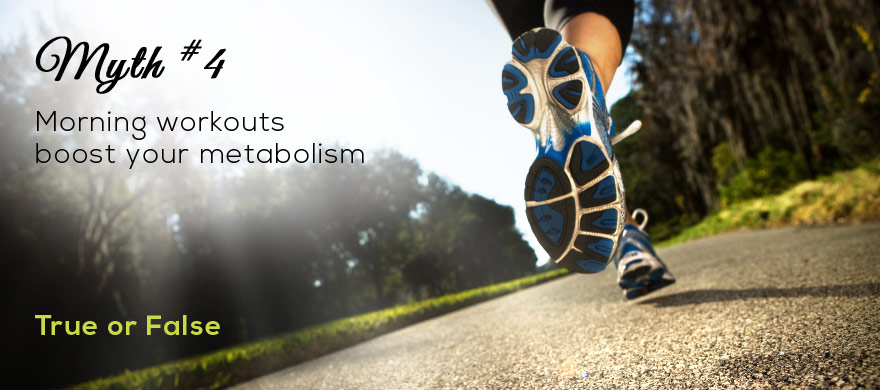
False.
Many, dare I say fanatical, people set their alarm clocks for 4:30 a.m. so they can get to the gym by 5:00 a.m. for an early morning workout. Some have no other choice, some actually enjoy a pre-sunrise sweat session, and some have to peel themselves out of bed, believing that a workout early in the morning results in more calories burned throughout the day. Their thinking is that exercising in the morning will elevate their metabolism to a higher level than a later workout and that it will stay elevated during the remainder of their daily activities. On the flip side, there is also the belief that if you work out before going to bed, you’ll burn fewer calories because you are not up and moving around. Both scenarios are false. The truth is that three hundred calories burned during a 5:00 a.m. workout or a 9:00 p.m. workout is simply three hundred calories burned. There have actually been a fair number of research studies done on this topic. For example, Galliven, et al. (1997) studied metabolic and hormonal responses of participants who worked out at different times of the day at high (ninety percent) or moderate (seventy percent) intensities. The authors concluded that the time of day at which the participants exercised (morning vs. evening) had no impact on the number of calories burned during the workout. One thing that is believed to be true is that many people can’t exercise as hard in the morning as they can later in the day. This is thought to be due to a decreased body temperature early in the morning as well as decreased flexibility and lower levels of alertness and vigor. So if you’ve been struggling to get yourself out of bed at 5:00 in the morning because you think you will burn more calories in your spinning class, by all means stay in bed! The best advice anyone could ever give about scheduling your daily workout is that you should exercise at a time which is convenient and appealing to you.
Reference:
Galliven, E., Singh, A., Michelson, D., Bina, S., Gold, W., and Deuster, P. Hormonal and metabolic responses to exercise across time of day and menstrual cycle. Journal of Applied Physiology (1997), Vol 83, pp. 1822-1831.
